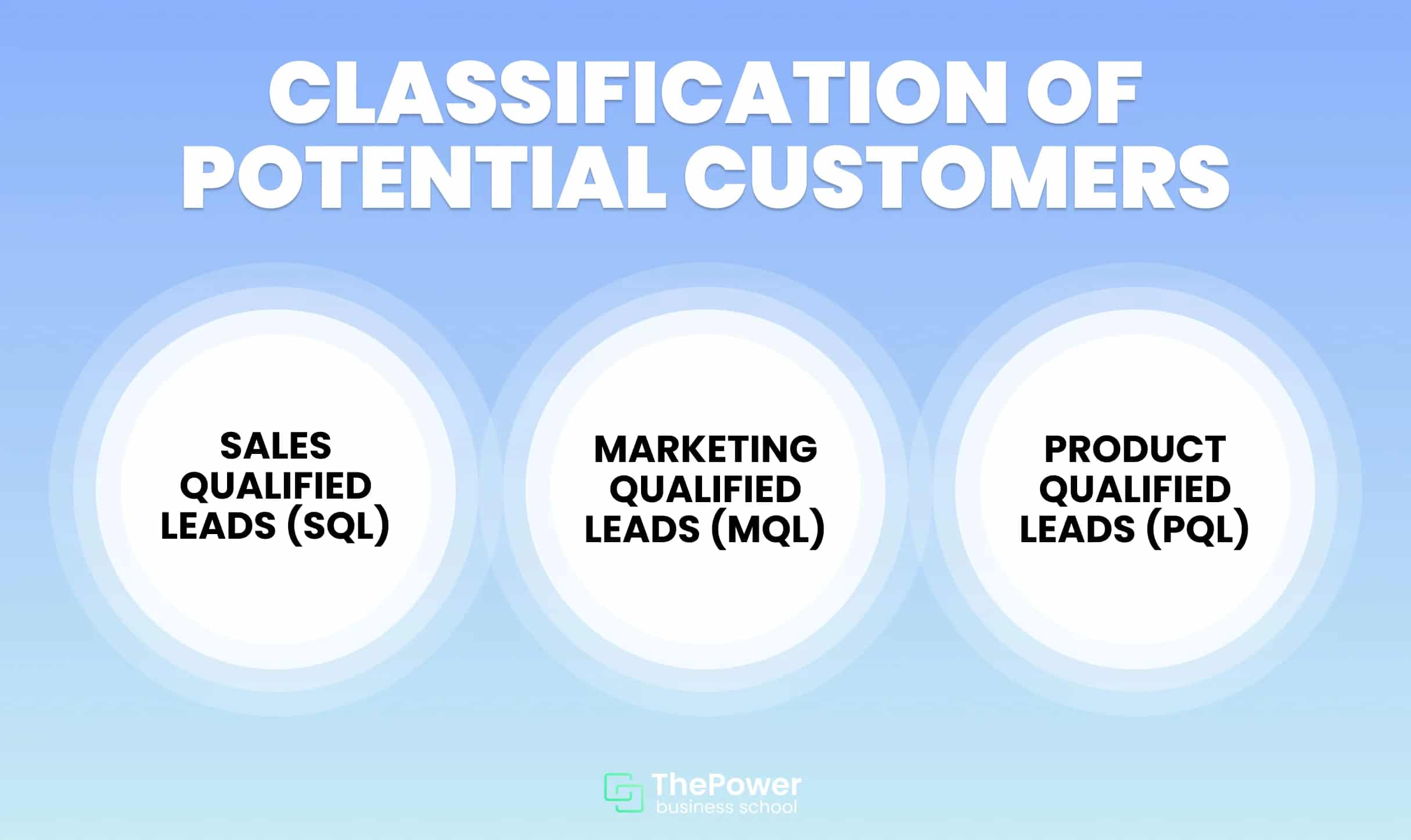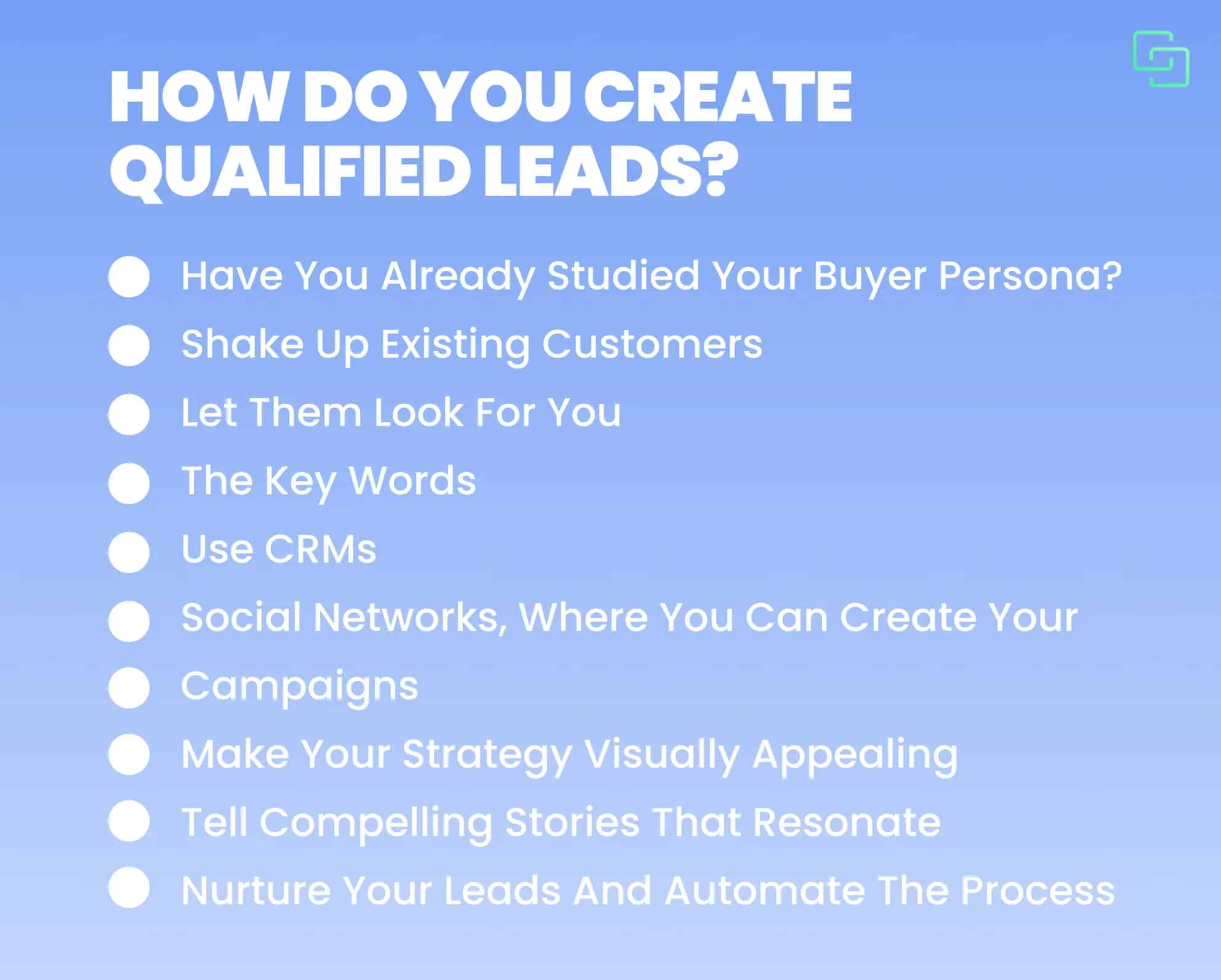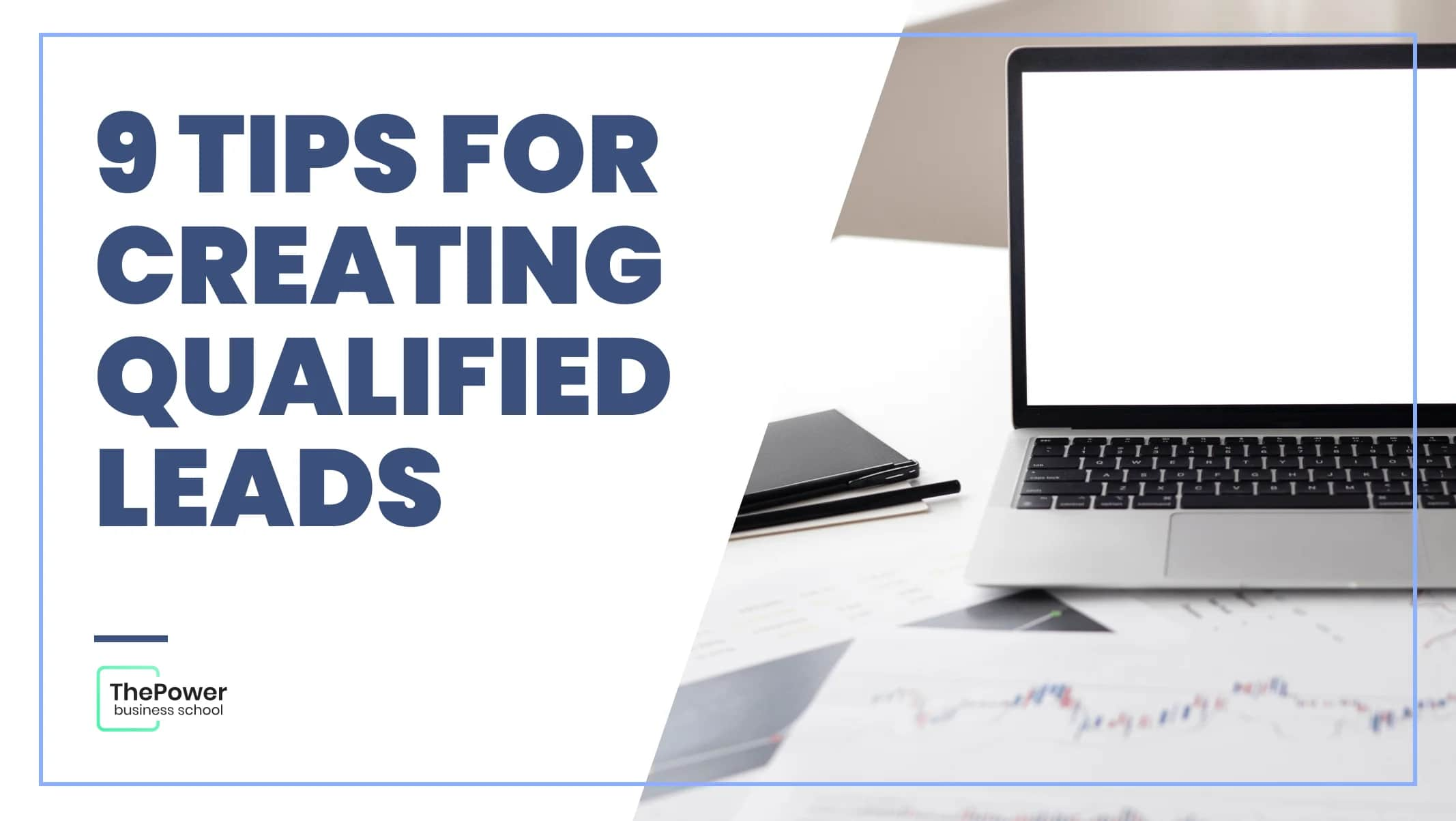How to create qualified leads?

Franco Brutti
Did you know that without customers, businesses cannot grow? Customers are the soul of a business and you need to have only the best ones... That's why you have to start by getting to know and generating qualified leads.
Many potential customers leave because they either don't understand your solutions or they don't find the right offer. Not all of them come to you with the same intentions, and that's where you have to differentiate them.
A customer's purpose is to buy, but in order to buy they need to be sure that you are their best solution.
And how do you get their attention, what would that ideal solution look like? By applying marketing strategies that directly influence their buying decision, i.e. by qualifying them.
So you should learn to differentiate between leads and qualified potential customers, those who will make the difference between a visit and an effective sale.
And that's what we're going to go over next.
What is a lead?
A lead is a potential customer or prospect. That is, it is not yet a customer but has enough potential to become one.
In the buying cycle, this is one of the stages that all consumers go through before they become customers.
So a potential customer is a person who shows interest in the solutions, products or services that you as a company offer in the market. Generally, potential customers learn about a product or service by interacting with the communications you send.
Classification of potential customers
Another interesting aspect of potential customers is that they can be qualified based on which of your strategies was responsible for converting them:
1. Sales Qualified Leads (SQL)
These are those who have already made the decision to become customers, i.e. their actions are oriented towards the purchase of products or services.
This can also include those consumers who intend to purchase your services, in the case of companies of this type.
2. Marketing Qualified Leads (MQL)
These are the ones who don't want to buy yet, so you don't yet have to surprise them with calls from the sales team, but they have joined your marketing efforts to be interested in the solutions you offer.
3. Product Qualified Leads (PQL)
These are the ones who have already made use of your solutions, products or services and are ready to become customers.
These customers are the ones promoted by companies that use free samples as proof of the efficiency or quality of products or services.
It is normal for companies with this type of customer incentive to offer greater benefits or offers when the customer gets the paid version.

The strategy of getting qualified potential customers
Many business executives or managers see lead qualification as something very insignificant, when in fact it is not.
It is important to distinguish between prospects, qualified prospects and customers. A good qualification will allow marketing and sales to understand each other harmoniously, identifying the best opportunities.
With this we want you, as the owner of your business, to give this process the importance it requires. The result? A greater number of satisfied customers, healthy finances and constant growth.
How do you create qualified leads?
You don't want to chase your prospects? Do you need to attract your leads to your products or services? Well, that's all there is to it.
What you need to do is apply marketing strategies that help you get them to come to you and not the other way around. It is important that, at the same time, they are not intrusive, but that the customer gives you permission to develop a two-way communication.
This is what is known as Inbound Marketing, a magnet for qualified prospects, and here are 9 tips for you to get only the best, which will culminate in successful sales:
1. Have you already studied your buyer persona?
Well, if you haven't, you need to start studying what your potential customers are like, because it's unfortunate, but not all audiences are the same.
Not all the people who come in contact with you are considered qualified leads, nor do they go straight to the action of buying.
Can you imagine understanding the mind of your prospects, what won't you conquer? Therefore, we recommend that you know everything about your ideal customer, their problems, needs, but beyond that, their habits and behaviours, especially in their interaction in the digital world.
This way you will be able to fine-tune your selection, not only by creating content and strategies that resonate with the audience's attention, but also by using other tools that help you develop your online and offline strategy.
2. Shake up existing customers
The qualified prospect strategy does not only apply to new customers. You can motivate existing customers better, because they are already familiar with what you offer.
With your loyal customers it is much easier to start the process, and according to marketing studies, loyal customers spend more than new ones.
Also, motivating customers will be a practical process to evaluate application strategies for leads and qualified prospects.
3. Let them look for you
Now, regarding general consumers, many companies invest a great deal of money in searching and searching, often with unsatisfactory results.
Traditional marketing mechanisms in many cases generate contacts who, in the end, decide not to do business with your solutions:
Because they didn't look for you.
Because they don't need your products or services.
Because they are not the target audience you need.
And the costs? A lead generated with traditional methods is between 50 and 60% more expensive. In other words, it costs you to capture prospects.
On the other hand, with methodologies where you create valuable content, ideal customers will find you where you want them to find you, and that is what Inbound Marketing does, creating content focused on the concerns of qualified prospects.
With this strategy you will know what they want to know and the information that identifies them will make them consider you a reference to solve problems.
4. The key words
How do you make your strategies appear in the online world? Simple: keywords. These behave like a magnet to attract potential customers to you.
How do you find the best ones? Well, for that you need to apply a research where you have to select the best ones in your market segment.
Keywords are really the search intentions that your prospects type in search engines like Google, in order to find a solution to their doubts.
By doing keyword research, you are checking what the audience's search preferences are and how to focus on the content to be generated.
This way, you can strike a chord with your audience, with specific topics, to convert their attention into sales.
Keyword tools? Many: you have Google Trends, Ubersuggest, Answer the Public, among others, free or paid.
5. Use CRMs
Generating quality leads, in many cases, requires keeping track of a few contacts, but without being overconfident.
In order to do this accurately, as if you were generating a long-distance relationship, you need tools such as CRM or Customer Relationship Management.
This management system will allow you to keep the data not only at hand but also up to date, so that you are not asking for it again and again.
A good CRM will allow you to follow the steps of your audience by analysing information, personalising the attention you offer to your audience, as well as qualifying each one in a more digital, much more intelligent way.
This tool allows you to better integrate the strategies of the sales and marketing departments, to better understand the trajectory of your audience through the sales funnel.
6. Social networks, where you can create your campaigns
CWith digitalisation, potential customers are sure to find themselves in the world of social media. Here you can interact with leads without the need for them to leave the app.
In addition, social media helps you to segment those prospects with the potential to become customers, why? Because the primary objective of social media is to drive your prospects to your website.
What's more, the companies behind each of them have increased their efforts to work as a channel for generating quality leads. To this end, they have shown an interest in creating precise marketing elements such as targeted Facebook ads or sponsored content on the LinkedIn professional page.
7. Make your strategy visually appealing
The new generations have made the strategies to be implemented as creative as possible.
You can stimulate your audience with blogs or other aspects, but remember that this is the “now is now!” generation. If you base your strategy only on this tool, you are likely to fail because not all Buyers identify with it.
This happens because we all have that part called sight, which is very active, and through which 90% of the information enters our brain. But how does the brain process it? By stimulating it graphically.
In other words, an eye-catching, attractive design is worth more than just 1000 words. So, you need to know how to integrate visual elements that stand out in a safe way in your strategy of attracting qualified leads.
8. Tell compelling stories that resonate
Stories are great resources to attract qualified prospects who can relate to them. But not just any story, as we told you in the previous point, you need to create visually compelling stories.
One way to publish stories is to focus on your corporate values or organisational philosophy through stories that recreate the everyday, that captivate feelings.
One of the best known tools is storytelling, with it, your audience will be able to see in a more personal tone that you are interested in helping them, in being the solution to their problems.
9. Nurture your leads and automate the process
Not every prospect will be a good fit for your market segment or organisation. So generating qualified prospects is a job that requires a lot of research and action.
One part of the action is to intensify the process of lead nurturing, which is a way to offer your qualified audience constant content that educates and nurtures them until they decide to participate in the final buying process of your products or services.
But this nurturing process must go hand in hand with an automation strategy. Use the right tools that allow you to segment and feed content to your qualified prospects.
You just have to create the parameters and these tools will automatically take care of the rest.
What will automation allow you to do? Focus on other aspects of your marketing strategies without worrying.

It’s important that you treat all your qualified prospects equally, with the same importance.
And if you liked the topic, and have anything to say or add, don't be shy and write to us, we'd love to read you in the comments.
Looking for something specific?






